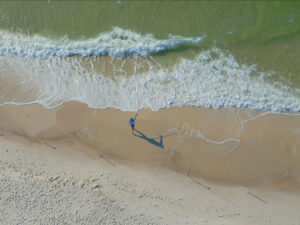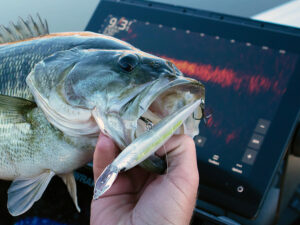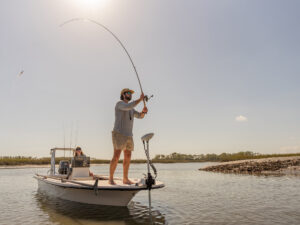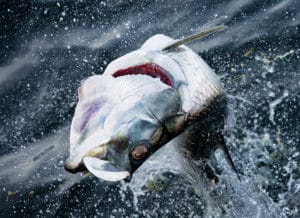What makes one fishing line excellent and another mediocre? That’s a loaded question, since it really depends upon your tackle and how you fish it.
That said, there are many brands and types of lines on the market, often differing markedly. This fishing line test compares most popular 30-pound lines in specific respects, and discusses how that information may be of interest and/or use to you.
Among the questions I sought to answer: How strong is each of these lines? That is, each is rated as “30-pound” test, but in fact, almost none break at that claimed strength. In fact, as the results show, one 30-pound line broke as high as 66.8 pounds. All but a few lines exceeded 30 pounds, though some broke at less than 27 pounds.
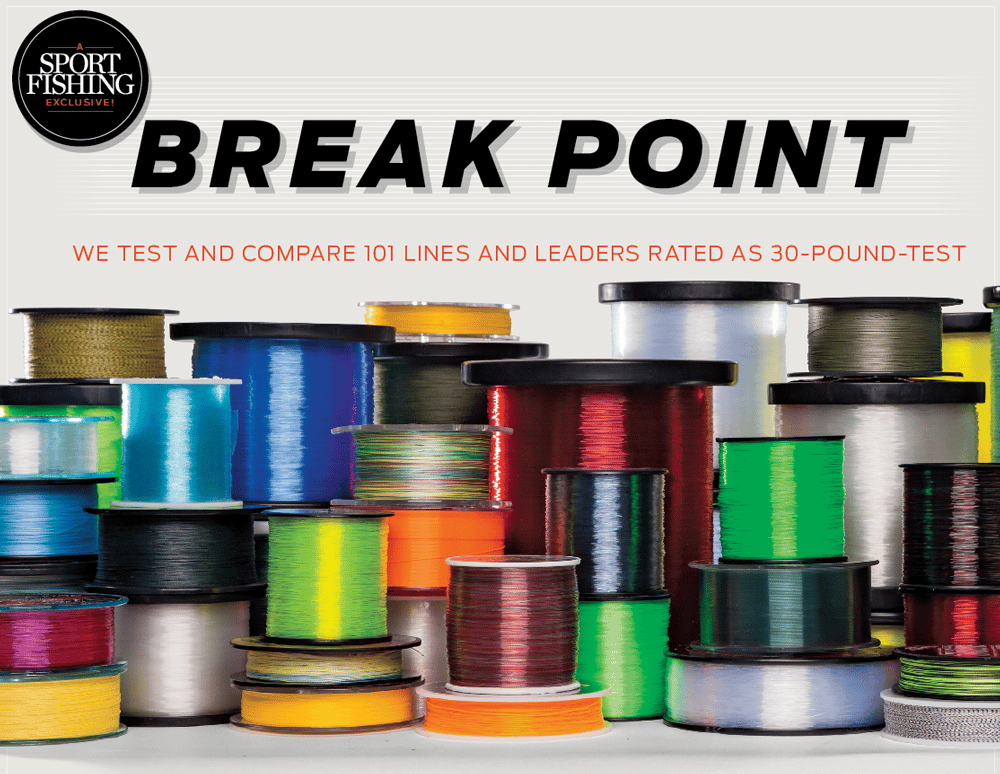
Mono, Braid and Fluorocarbon Line Test
I tested and compared the three primary types of fishing line and leader: mono, braid and fluorocarbon. Manufacturers I interviewed generally felt that overall, mono continues to generate more sales than braid or fluoro, but both of the latter continue to take market share from monofilament. Most line types are popular for particular fisheries for various reasons. All have their fans. Manufacturers are continually coming out with new lines, so not all current offerings are included in these 101 lines tested. But odds are good you’ll find what you’re fishing included in this report.
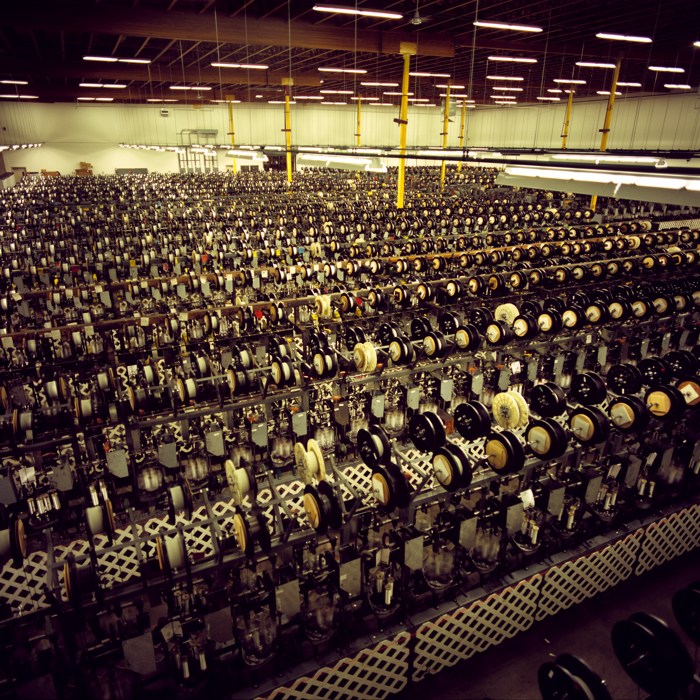
Fishing Line Testing Methods
All lines were tested on an Instron 5543, a large, state-of-the-art tensile- (line-) testing machine, regularly (and recently) factory calibrated. Thanks to the International Game Fish Association — which uses the Instron to test breaking strength of line samples submitted with world-record applications — for generously giving this up to me for two very long days.
All line samples tested were 10 inches long, clamp to clamp, the same standard length the IGFA uses when testing line samples with record applications.
I performed three separate fishing line strength tests on each brand of line, separating each sample by many yards of line. The Instron’s analysis automatically averaged these for a mean-break figure, and averaged for the three tests the distance the line stretched before breaking. The analysis also provided a figure for the average deviation for the three tests, revealing how much each type of line varied in breaking strength.
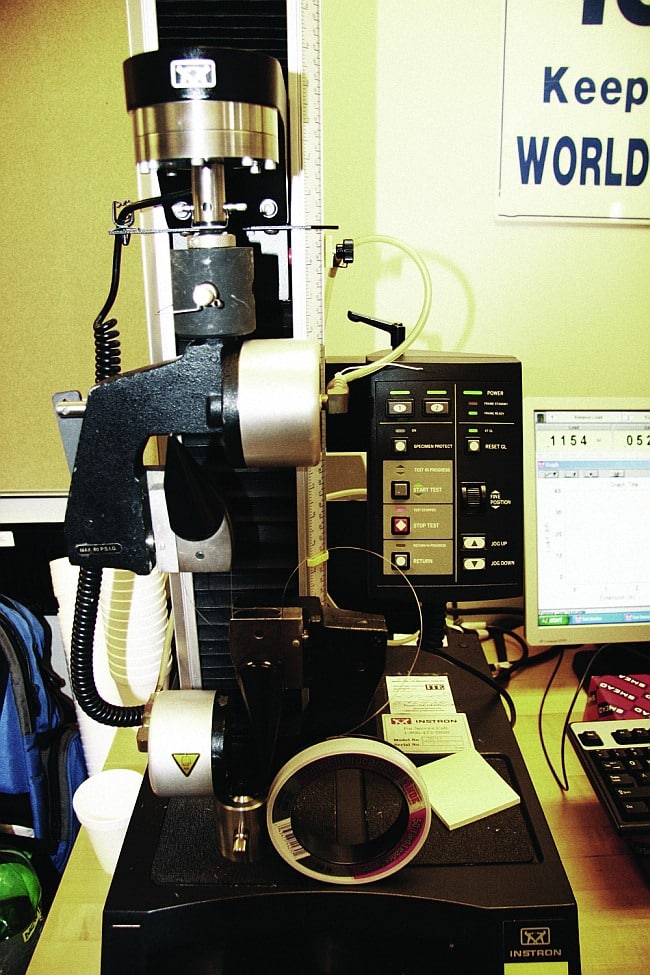
All monofilament lines were tested after a two-hour soak (the same soak time employed by the IGFA in its testing) to saturate them. Thus, the mean break figures listed for mono represent wet (real-world) tests; if tested dry, these monos would have broken higher by roughly 8 to 12 percent. (Manufacturers insist that fluorocarbon does not absorb water, though some limited testing I’ve done showed fluoro breaking slightly lower after becoming saturated.)
Time constraints also deterred me from measuring diameters of mono and fluoro with a digital caliper. The challenges of trying to measure the diameter of braid (which tends to flatten in the jaws of a caliper) were a further deterrent. Rather, I used the manufacturers’ stated diameters. While I’m sure many of these figures are dead-on, I certainly wouldn’t stake my life on that in all cases; it’s certainly possible that some diameters listed by manufacturers are on the low side.
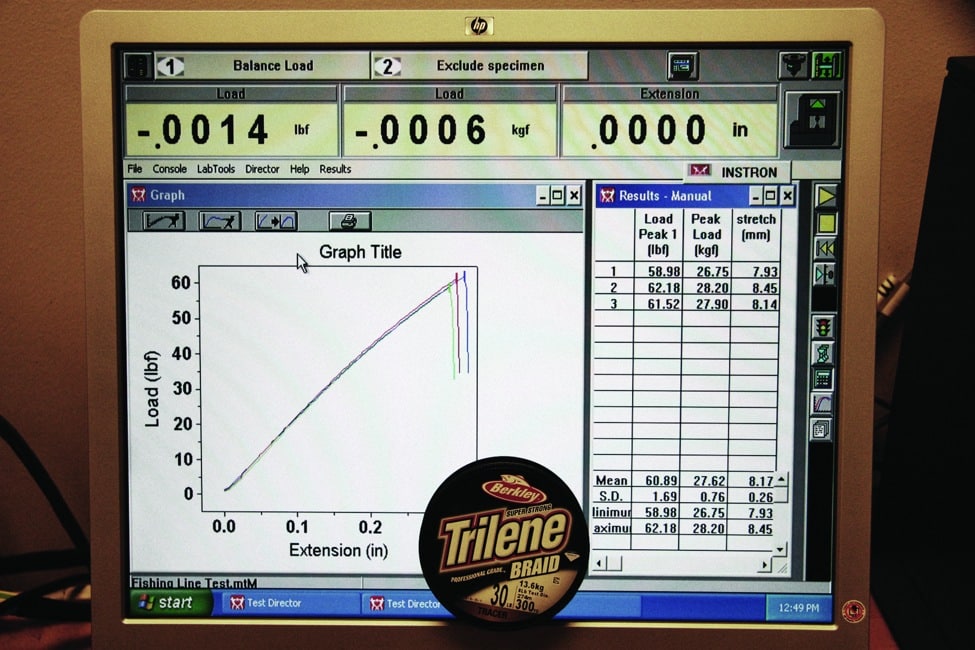
More on Testing
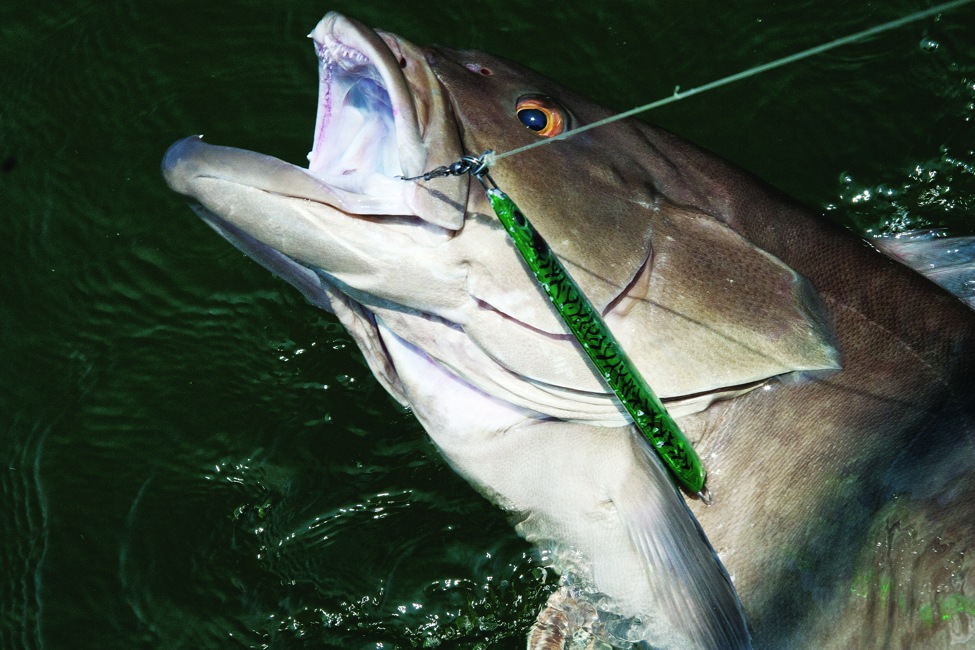
Interpreting the Results
It’s in the manufacturer’s interests to come in on the low side. Not surprising, larger-diameter lines offer both pluses and minuses — notably greater resistance to abrasion and safety (less likely to cut hands), but they come with trade-offs of more water resistance and less line capacity on the reel.
“How strong is my line?” The real strength of a line is a function of its thickness. If a GSP thread with a diameter barely more than that of a hair breaks at 50 pounds, and a 2-inch rope also breaks at 50 pounds, it’s obvious which is stronger. Even if all of these lines broke at 30 pounds exactly, line strengths would still vary because diameters vary.
To determine how strong each line is, I calculated the cross-sectional area based on diameter, and divided the mean break strength in pounds by the square inches of the line in cross section. The result is pounds per square inch.
Clearly GSP braids are far stronger than mono or fluoro; little surprise there, since they’re so much thinner for the same break point. But I was surprised at just how strong many are exceeding 500,000 pounds per square inch. Then again, figure that a wispy thread of the stuff can be too strong to break with bare hands (think about getting hung in the bottom and having to break off 80-pound braid); now imagine how strong a rope of GSP braid more than an inch thick would be.
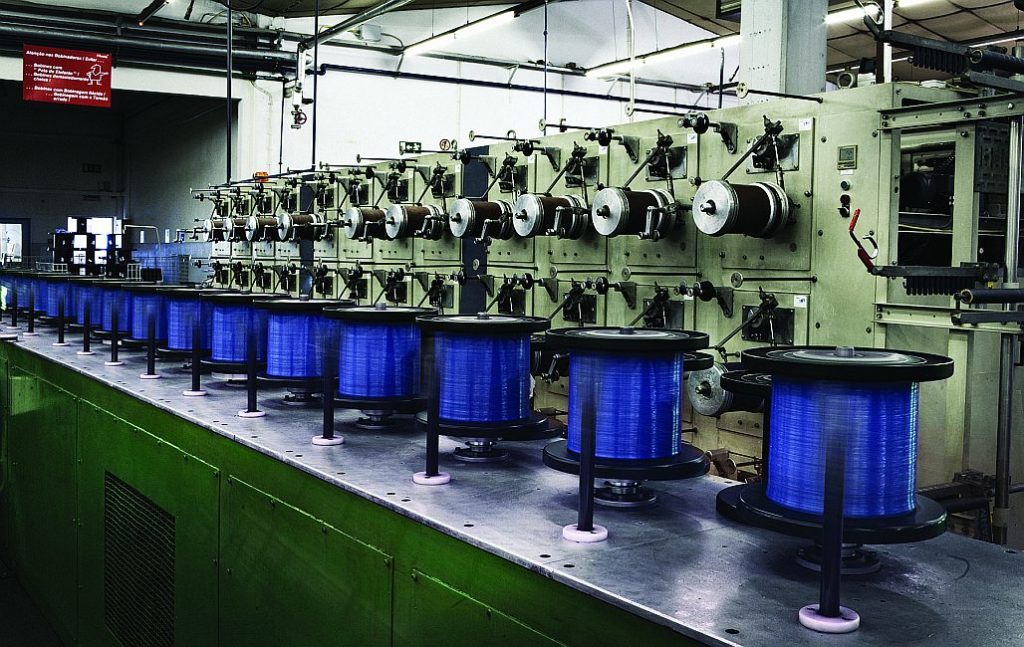
Consistency and Stretch
Deviation: This is a measure of how consistently a line broke, i.e., if the deviation was, say, less than two, it suggests a line is consistent on the spool. That can be particularly important with anglers fishing tournaments or for world records. Most lines did break pretty close to the mean, though a few showed wide variation.
Stretch: Here again the difference between braided and nylon lines is striking, with mono and fluoro stretching typically 20 to more than 30 percent before snapping, and braid stretching minimally, from less than 3 to a bit more than 5 percent before breaking. And, again, there are trade-offs. The stretch of mono acts as a shock absorber, giving considerably before the line snaps or a hook pulls out. But that stretch makes it far less sensitive for anglers to feel subtle pulls at the business end, and for fishing deep water, the rubber-band effect also adds to the challenge of setting hooks.
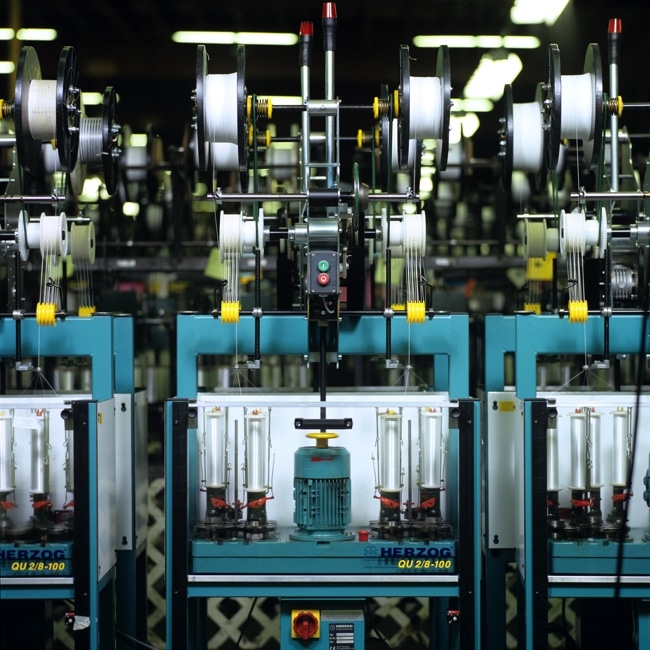
Cost per Yard
I went after “street prices” by going to one of several large online retailers (Cabela‘s, Melton or Tackle Direct), though together these didn’t carry all brands, so I found prices elsewhere online for some lines, as noted in the charts. I tried to keep spool sizes as similar as possible; that proved easy with braid but more difficult with mono, since for some lines, only large bulk spools were available. Larger spools are likely to reflect a lower cost per yard than the same line might offer if available in smaller spools.
Clearly, fluorocarbon leader is relatively precious stuff, ranging from 20 to 76 cents per yard. Fluoro line is less, priced roughly similar to the more-expensive monofilaments, most of which run a few cents more per yard. Braids vary from about 7 cents to 20 cents per yard.
Braided Fishing Line Test Results
No matter what “superbraid” line you purchase, you’ll be using either Dyneema (made by DSM in the Netherlands) or Spectra (made by Honeywell in the United States), both high-modulus gel-spun polyethylene (GSP). Both claim to be many (up to 15) times as strong as steel. GSP lines are used by bow hunters, mountain climbers, and even astronauts for space tethers. I’ve found no evidence that one type of GSP is significantly better.
Individual fibers must be initially braided to form larger lines; they then remain either in braided form or are thermally fused. Most super lines are braided — they have the texture of a tiny braided rope. Fused lines feel more uniform, like a strand of nylon. Which is better depends upon both preference and use. Fused GSP is stiffer and often favored for use on spinning reels, though it’s seldom available in strengths heavier than 30-pound-test.
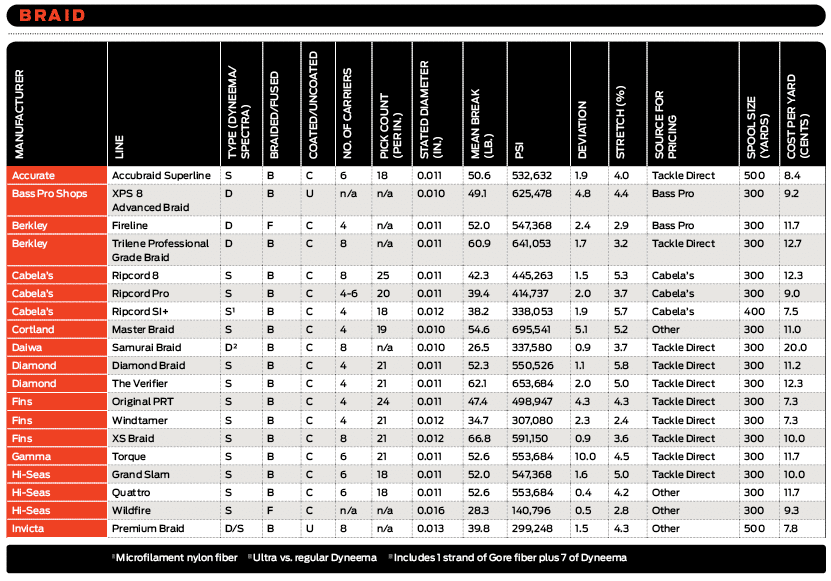
Coated or Uncoated
When GSP lines first gained popularity, most had no coating. The fact that today all but a few choose to use a coating is indicative. Coatings can offer a lower coefficient of friction for longer casts, as well as help with knot strength and abrasion resistance. They might slightly increase diameter however, especially in lighter braids, and also — at least until they have been used for a time — add to stiffness.
Number of Carriers
Don’t let the industry term “carriers” confuse you; this is simply the number of strands that are braided together to form a finished GSP line. They vary from four to eight. As you might expect, generally eight-carrier braids are more expensive, but there are exceptions. Nor is the number of carriers directly related to either diameter or strength (psi).
Pick Count
This is the number of times the carriers are braided within an inch of line. This varies from 10 or so up to 32 (Sufix 832). While a higher pick count would seem desirable, as with the number of carriers, it is hard to directly relate performance (or for that matter, price or cost) with pick count.
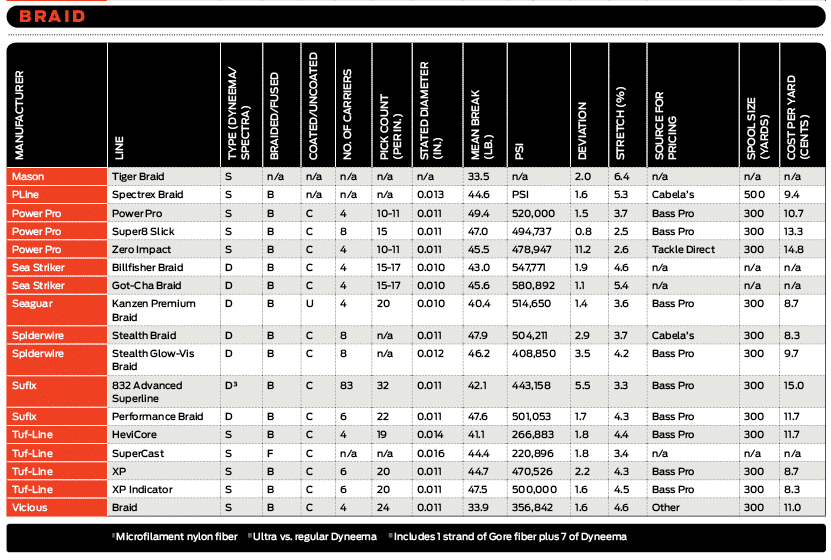
Monofilament Fishing Line Test Results
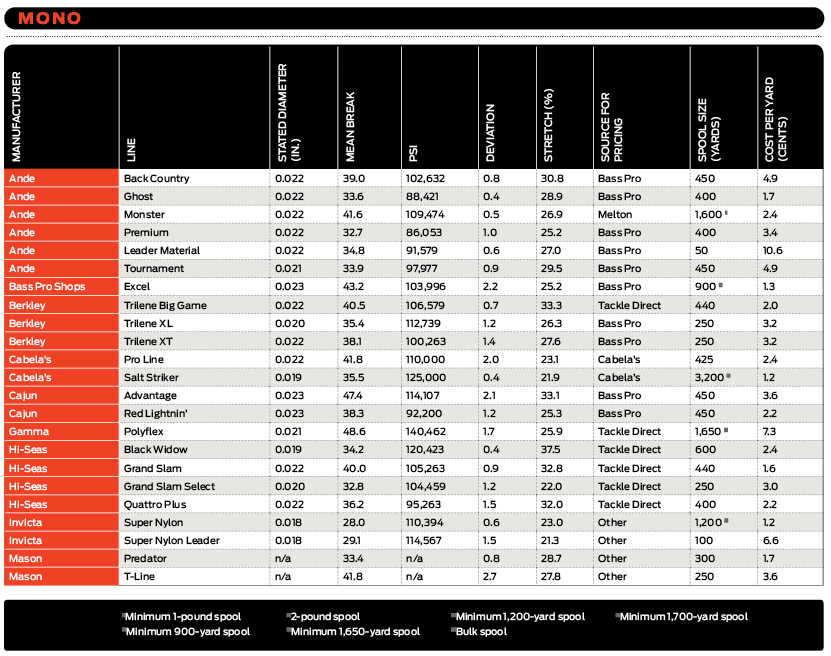
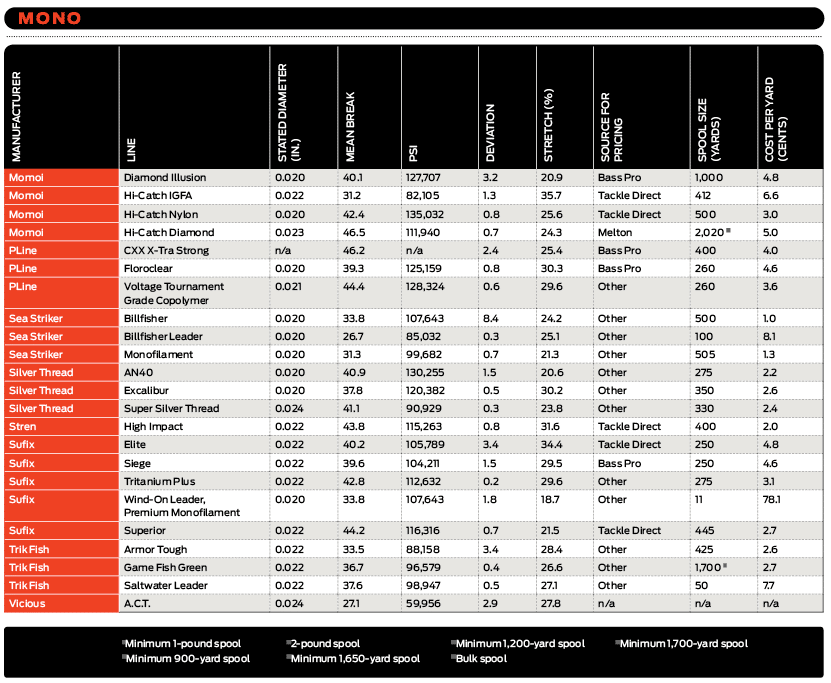
Fluorocarbon Fishing Line Test Results
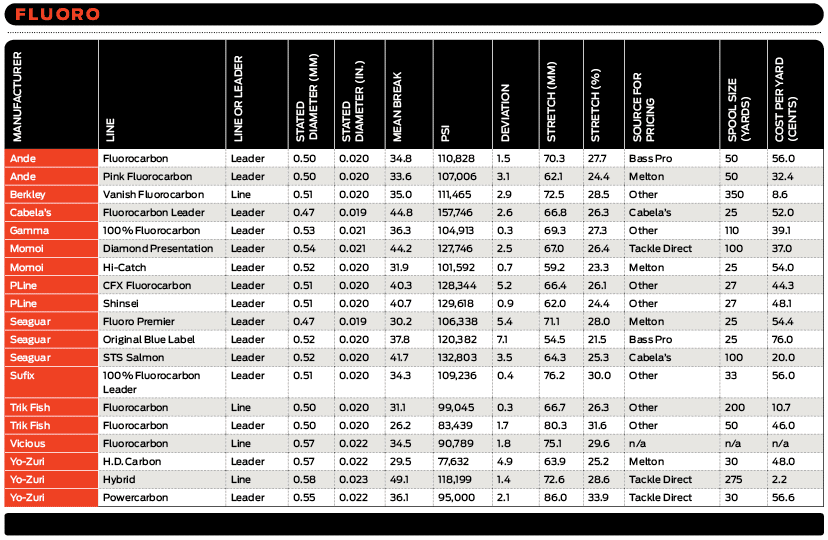
FLUOROCARBON — TEST RESULTS AND HIGHLIGHTS
Significance of the Results
While a fishing line test like this can be useful in assessing various lines, many important aspects of lines were not tested. Notably that includes abrasion resistance, lacking the means for a valid real-world test. (As noted, in a general sense, greater diameter means greater resistance to abrasion.)
It was neither feasible for me to quantify elements such as stiffness, memory (in mono), color-fastness (in braid) and so on, nor did I have time to perform knot-strength tests on each line.
While a buyer might be able to judge lines somewhat by how they feel in a tackle shop (though not even that if purchased online), in fact, there’s no substitute for buying and trying. Actually fishing a line is the best way to judge how it performs for your tackle and use.
About the Knots
I had no time for a focused knot-strength test, but I thought I’d revisit the critical and often challenging direct connection of braid (in this case, 30-pound Sufix 832) to a fairly heavy mono leader (here, 80-pound Ande). As in past testing, the improved Bristol knot offered by far the strongest connection, generally well over 90 percent of the line strength.
With Braid it’s All About Diameter
“With braided line, it’s very important — particularly on baitcast reels — to select your line more by diameter than break strength,” says Clay Norris, Berkley’s senior brand product manager for fishing lines. He explains with an example: If using mono on a large baitcaster, you might go with 20-pound — roughly the size line for which it was designed. But if you put 20-pound braid on the same reel, that’s like filling up with 6-pound mono — in terms of the braid’s diameter and performance — on a reel not designed for such small line. Among the problems that can result is the line “digging into itself.” The solution, if you want to use braid, is to go with a larger-diameter braid, even if the strength is considerably greater. You can fish it like 20-pound — or fall back on the extra strength if you unexpectedly need it.

